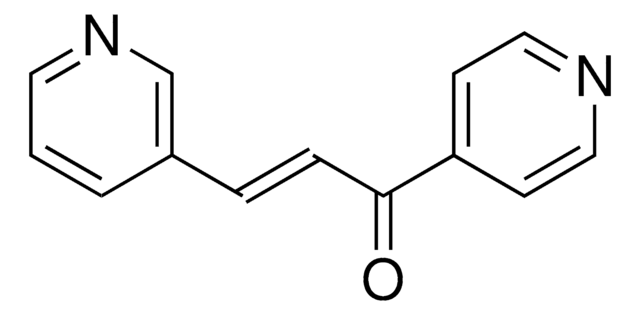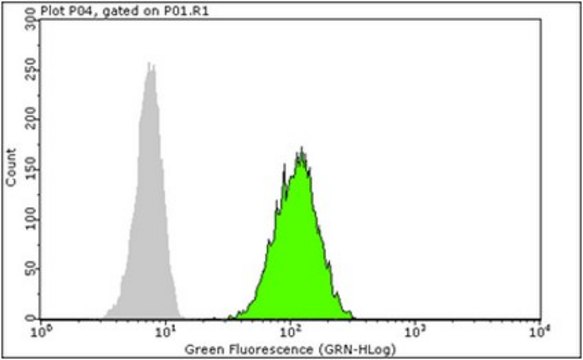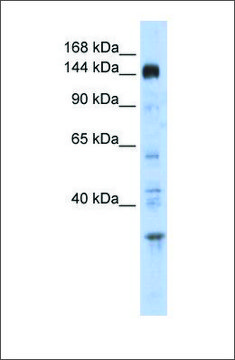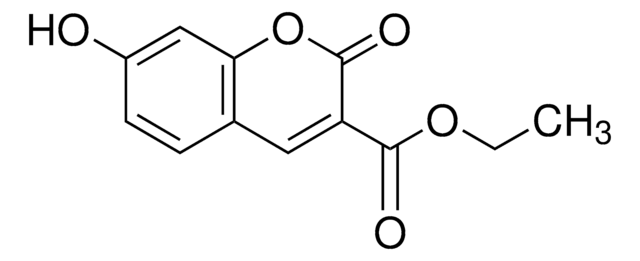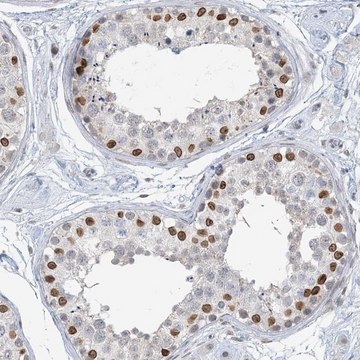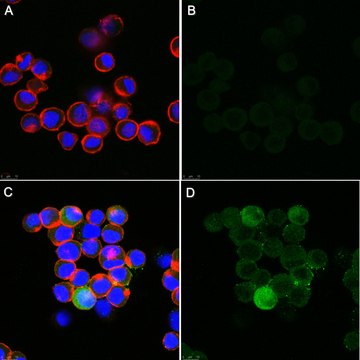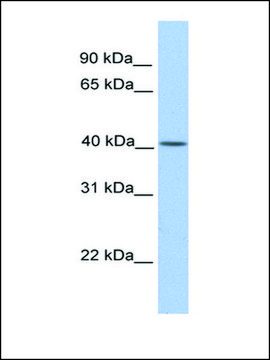MABC1203
Anti-PFKFB3 Antibody, clone 4C10.2
clone 4C10.2, from mouse
Sign Into View Organizational & Contract Pricing
All Photos(2)
Synonym(s):
6-phosphofructo-2-kinase/fructose-2,6-bisphosphatase 3, 6PF-2-K/Fru-2,6-P2ase 3, 6PF-2-K/Fru-2,6-P2ase brain/placenta-type isozyme, iPFK-2, PFK/FBPase 3, PFKFB3, Renal carcinoma antigen NY-REN-56
UNSPSC Code:
12352203
eCl@ss:
32160702
Recommended Products
biological source
mouse
antibody form
purified immunoglobulin
antibody product type
primary antibodies
clone
4C10.2, monoclonal
species reactivity
human
technique(s)
immunocytochemistry: suitable
western blot: suitable
isotype
IgG2aκ
NCBI accession no.
UniProt accession no.
target post-translational modification
unmodified
Gene Information
human ... PFKFB3(5209)
General description
6-phosphofructo-2-kinase/fructose-2,6-bisphosphatase 3 (EC 2.7.1.105; EC 3.1.3.46; UniProt Q16875; also known as 6PF-2-K/Fru-2,6-P2ase 3, 6PF-2-K/Fru-2,6-P2ase brain/placenta-type isozyme, iPFK-2, PFK/FBPase 3, Renal carcinoma antigen NY-REN-56) is encoded by the PFKFB3 gene (Gene ID 5209) in human. The homodimeric bifunctional 6-phosphofructo-2-kinase/fructose-2,6-bisphosphatases (PFKFBs) phosphorylate fructose 6-phosphate (F6P) to fructose-2,6-bisphosphate (F2,6BP), which in turn activates 6-phosphofructo-1-kinase and glycolytic flux to lactate. PFKFB3 is distinguished from the other three known PFKFBs (PFKFB1, 2, 4) by the presence of multiple copies of the AUUUA instability motif in its 3′-untranslated region, a very high kinase:phosphatase activity ratio (740:1), increased protein expression in rapidly proliferating transformed cells, solid tumors and leukemias, and regulation by several proteins essential for tumor progression. Heterozygous deletion results in reduced glucose metabolism and growth of Ras-transformed tumors in Pfkfb3+/- mice. PFKFB3 nuclear localization is reported in multiple cell lines due to the presence of a highly conserved C-terminal nuclear localization motif. F2,6BP is reported to enhance cyclin-dependent kinase (Cdk) activity toward p27 Thr187 phosphorylation in vitro, while ectopic expression of PFKFB3 in the nucleus is found to stimulate cellular proliferation without affecting glycolysis, suggesting a novel role of PFKFB3-mediated F2,6BP in cell cycle regulation. The canonical form of human PFKFB3 is a 520-a.a. protein composed of an N-terminal 6-phosphofructo-2-kinase domain (a.a. 1-245) and a C-terminal fructose-2,6-bisphosphatase domain (a.a. 246-520).
Specificity
The immunogen corresponds the C-terminal fragment of human PFKFB3 spliced isoforms 1, 3, and 4 reported by UniProt (Q16875), cross-reactivity toward spliced isoform 2 is likely, but has not been confirmed.
Immunogen
Epitope: C-terminal region.
GST-tagged recombinant human PFKFB3 C-terminal fragment.
Application
Immunocytochemistry Analysis: A 1:250 dilution from a representative lot detected PFKFB3 in A431 cells.
Research Category
Apoptosis & Cancer
Apoptosis & Cancer
Research Sub Category
Glucose/Glycogen Metabolism
Glucose/Glycogen Metabolism
This Anti-PFKFB3 Antibody, clone 4C10.2 is validated for use in Western Blotting, Immunocytochemistry for the detection of PFKFB3.
Quality
Evaluated by Western Blotting in HEK293 cell lysate.
Western Blotting Analysis: 2.0 µg/mL of this antibody detected PFKFB3 in 10 µg of HEK293 cell lysate.
Western Blotting Analysis: 2.0 µg/mL of this antibody detected PFKFB3 in 10 µg of HEK293 cell lysate.
Target description
~57 kDa observed. 59.61 kDa (isoform 1), 58,88 kDa (isoform 2), 57.29 kDa (isoform 3), 60.60 kDa (isoform 4) calculated. Uncharacterized band(s) may appear in some lysates.
Physical form
Format: Purified
Protein G purified.
Purified mouse monoclonal IgG2aκ antibody in buffer containing 0.1 M Tris-Glycine (pH 7.4), 150 mM NaCl with 0.05% sodium azide.
Storage and Stability
Stable for 1 year at 2-8°C from date of receipt.
Other Notes
Concentration: Please refer to lot specific datasheet.
Disclaimer
Unless otherwise stated in our catalog or other company documentation accompanying the product(s), our products are intended for research use only and are not to be used for any other purpose, which includes but is not limited to, unauthorized commercial uses, in vitro diagnostic uses, ex vivo or in vivo therapeutic uses or any type of consumption or application to humans or animals.
WGK
WGK 1
Flash Point(F)
Not applicable
Flash Point(C)
Not applicable
Certificates of Analysis (COA)
Search for Certificates of Analysis (COA) by entering the products Lot/Batch Number. Lot and Batch Numbers can be found on a product’s label following the words ‘Lot’ or ‘Batch’.
Already Own This Product?
Find documentation for the products that you have recently purchased in the Document Library.
Our team of scientists has experience in all areas of research including Life Science, Material Science, Chemical Synthesis, Chromatography, Analytical and many others.
Contact Technical Service